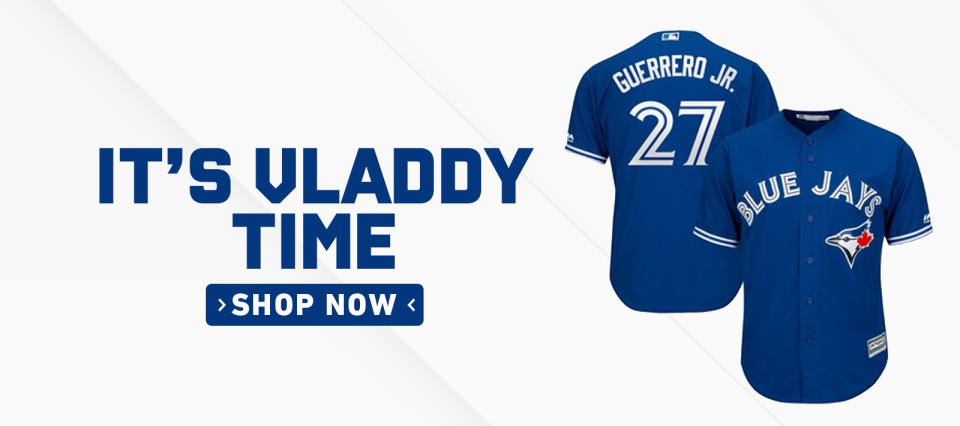Blue Jays seem to be targeting floor over ceiling in prospect acquisitions
When it comes to baseball players, age and ceiling do not have a purely negative correlation.
Breakouts aren’t confined to a specific age and there are high-risk high-reward prospects who are a little older, and younger guys who are safe with uninspiring potential. Generally speaking though, the younger the prospect the wider the range of outcomes, and as they get older they become more crystallized as players.
So, when a team like the Blue Jays show an exaggerated preference for prospects in a particular age range, it seems to speak to some kind of team-building philosophy — and make no mistake, the prospects this team is acquiring undoubtedly skew old.
Here’s a comprehensive list of players the Blue Jays have acquired at the last three trade deadlines and their age at the time of those deals:
Other notable deals for prospects during this time included Aldemys Diaz for RHP Trent Thornton (25), Russell Martin for Ronny Brito (19) and Andrew Sopko (24) and Kevin Pillar for Juan De Paula (21) and two post-prospects in Derek Law and Andrew Hanson.
There are a lot of players in the 23-25 age range there, a point where players rarely have too much room to improve. For every late bloomer like Jose Bautista and Jacob deGrom, there are countless others whose games didn’t evolve much past that point. Vladimir Guerrero Jr.’s youth, for instance, is an enormous component of his appeal and the optimism surrounding him.
There are some exceptions here, but the Blue Jays have largely gone for more polished products closer to the big leagues instead of opting for lottery tickets. The question is why, especially considering they’re in the midst of a rebuild with very little urgency to win now. Asked about the trend, GM Ross Atkins claimed it wasn’t a driving factor for his decision making.
“It’s a fair question and something that balances in, but obviously youth is very valuable,” he said. “Simeon Woods Richardson is the outlier there, but it really comes down to the total package and age is just one part of the equation.”
There’s nothing inaccurate about that statement, but it undersells how important achievement is compared to age. The recently-acquired Kyle Johnston, for instance, has solid minor-league numbers, but the fact he’s 23 and playing at High-A matters — especially considering he’s repeating the level. Similarly, Thomas Hatch’s numbers at Double-A are made monumentally less impressive by the fact he’s 24.

According to Atkins, the shape of the prospect crop might have been slightly different if the club had been able to move Ken Giles.
“It really came down to Marcus Stroman and Ken Giles,” he said. “They were the biggest levers to potentially pull and Ken Giles’s injury, not so much the injury as the timing of the injury, complicated that.”
If the Blue Jays had traded Giles, maybe they would have gone for higher-ceiling talent that was further from the big leagues, but it’s worth remembering that half of their return for Stroman was a 24-year-old and they cashed in J.A. Happ, their big trade chip last year, for a soon-to-be 26-year-old Brandon Drury and a soon-to-be 24-year-old in Billy McKinney, and that deal’s not looking so hot.
Atkins went on to contend that the quality of the pieces he had on offer made the acquisition of youth difficult.
“The control of Daniel Hudson and David Phelps being limited, the return was going to be probably not for some of the best, young exciting prospects in baseball. So we’re looking for opportunities where things lined up in terms of objective analysis, and having good scout looks, and feeling like there was some upside.”
Once again, that statement isn’t false, but it creates a false dichotomy. There aren’t two kinds of prospects: super exciting young guys and fringy older guys dangerously close to post-prospect status.
Players like Samad Taylor and Ronny Brito seems like good examples of young prospects that aren’t ranked amongst baseball’s best, but have a shot down the line. Those guys came in deals for Joe Smith on an expiring contract and one year of Russell Martin with a paid-down contract — neither of which are top trade chips.
Taylor and Brito may wind up being nothing — in fact the odds are stacked against them. However, when you’re in a deep rebuild — and the Blue Jays are clearly in a deep rebuild — it pays to bet on a few longer shots. Fernando Tatis Jr. is the most exciting young player in baseball and he was a throw-in piece for late-career James Shields at age 17. That almost never happens, but sometimes it does, and it feels like the Blue Jays aren’t giving themselves many chances for that to happen to them.
This is not a point that can be made in absolutes. At times, targeting more polished prospects has worked for the Blue Jays. Trent Thornton looks like a keeper, even if he winds up in the bullpen and Thomas Pannone is a handy MLB-calibre lefty. Though the Teoscar Hernandez experience has been a roller coaster, it’s fair to describe him as a worthy gamble — and a high-ceiling one at that.
Even so, on balance the Blue Jays have appeared to prefer safer prospects closer to the majors even if that means sacrificing upside. That strategy would make more sense if their competitive window was imminent, but considering they are at least a couple of years out it just looks like risk aversion.
More Blue Jays coverage from Yahoo Sports

 Yahoo Sports
Yahoo Sports 


